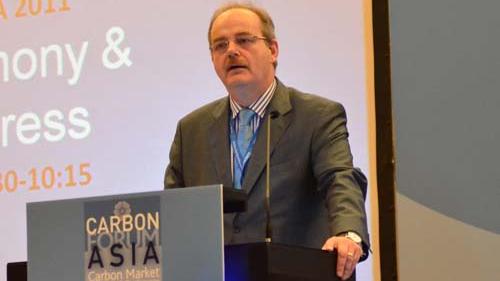
What you need to know about Asia’s Clean Development Mechanism – IETA’s perspective
Asia has now become the global center for new trends in emission trading but it must be vigilant not to commit same mistakes as the West.
On the sidelines of the Carbon Forum Asia 2012, Asian Power caught up with International Emissions Trading Association president and chief executive officer Henry Derwent to talk about the changing landscape of Asia’s CDM including key lessons from Western experience that the region should learn from.
| The CDM in the next 10 years in Asia will likely look very different from today. Many Asian countries are taking steps to calculate, manage and reduce their emissions domestically. China's 12th five-year plan calls for piloted carbon trading, India is moving forward with energy efficiency and REC trading schemes, and we are also seeing policies being debated in the legislatures of South Korea and Taiwan, as well as Japan. Clearly the success of emission trading in Europe has been picked up by policymakers in Asia during the growth of the CDM and given the slow progress in the US, Asia has become the global focal point for new trends in emissions trading. When we take a step back and look at the direct and indirect effects of the CDM in Asia, it’s been quite remarkable how significant a development tool it is. For example, the CDM really spurred the growth of the wind industry in China and led the government there to push for increased installed capacity of wind and other renewable energies. In 2005 China had 1,260MW of installed wind capacity and at the end of 2010 that number had risen to 41,800MW of installed capacity. Another example could be biogas in southeast Asia. In 2005, the standard approach to treating waste effluents (with their associated gas emissions) in the region was to put them in a lagoon or pit; with the advent of the CDM we saw a number of technology providers and developers use it as a tool to finance the treatment and re-use of such gases. Now all over southeast Asia, biogas has become the new standard for such firms. There are many more such examples, but it should be noted how important a tool it is for promoting the use of new low-carbon technologies. Policymakers in Europe hope that Asia will not see repetitions of the over-allocation of permits, poor registry security and tax frauds that have occurred there. Nor does anyone concerned about emissions growth in Asia want to contemplate a reversal of emissions trading policies such as was seen last year in Washington. It seems probably that each fast-growing Asian country will develop its own emissions trading system and each will be unique in its own right. IETA is hoping to help drive the dialogue and aid Asia's understanding of European and other ETS examples; and continuing to promote and publicise the fact that emissions trading is the proven low-cost solution for mitigating climate change. |
To contact the journalist, you may send your message to [email protected]























 Advertise
Advertise








